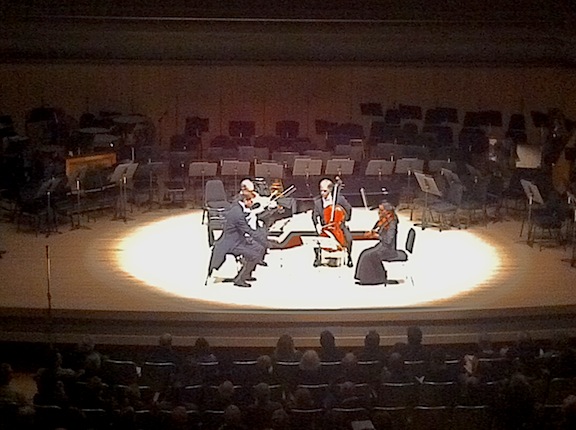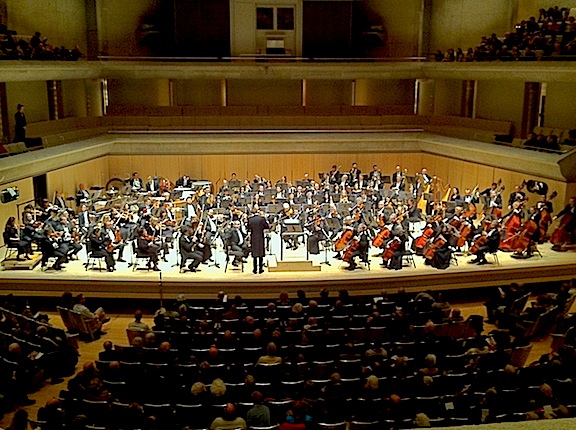

The Toronto Symphony Orchestra is playing with contrasts this week — the contrasts of psychological struggle inside Gustav Mahler’s Symphony No. 6, as well as the contrast between a chamber quartet and an orchestra of 100 musicians.
- Classical Music 101: What Does A Conductor Do? - June 17, 2019
- Classical Music 101 | What Does Period Instrument Mean? - May 6, 2019
- CLASSICAL MUSIC 101 | What Does It Mean To Be In Tune? - April 23, 2019
The contrasts worked as intended at the first performance at Roy Thomson Hall on Wednesday night, thanks to fine playing and excellent leadership from visiting conductor Thomas Dausgaard.
The evening opened with a deserted stage at the centre of which sat four chairs and a grand piano, bathed in a circle of light, and closed with the last halting, crashing, clanging notes of a massive symphony.
Although it may seem odd to have such disparate forces on the same stage at the same concert, to me the effect underlined the fact that the same intensely detailed, collaborative musicianship underpins all performances, large or small.
In the case of the Mahler Piano Quartet movement and Symphony, the juxtaposition highlighted how both works are built on the obsessive repetition of musical motifs.
And then there were the passionate, expressive, tight performances themselves, presented by an orchestra in top form.
TSO concertmaster Jonathan Crow and principals Paul Meyer (second violin), Teng Li (viola) and Joseph Johnson (cello) are great fans of chamber music. Given the freedom to express themselves this way, they pulled off a magnetic performance — even when disadvantaged by the size of Roy Thomson Hall.
They began with the beautiful Quartettsatz D703 by Franz Schubert, a single movement that manages to express a lot in its careful thematic development. In the Mahler quartet, Meyer was replaced by pianist Jamie Parker, who focused on careful blending a bit too much, relegating the piano to the background too much of the time.
Then, barely warmed up by the excellent chamber music, we were sent off to an intermission before the 80-minute onslaught of Mahler’s Sixth, the “Tragic.”
Mozart and Beethoven have fans, but Wagner and Mahler have disciples. Some of the greatest conductors of the 20th century have passionately defended the merits of Mahler, but I can’t help thinking that some of his symphonies might be improved with a few judicious cuts by the musical equivalent of a dramaturg.
But I don’t think Wednesday night’s performance could be improved on much, as Dausgaard deftly walked Mahler’s tightrope between joy and unhappiness, working out all the complex little orchestral details neatly, and providing a very clear larger arc for the musical unfolding to follow.
If you allow yourself to let go, this is a thrilling orchestral ride that goads different timbres and colours from each instrument, depending on the movement and mood.
Mahler was an opera conductor, and his symphonies are operas without words. And when they are interpreted as powerfully as in Dausgaards hands, words become unnecessary.
There’s a repeat performance on Thursday night that’s worth catching. details here.
+++
In case you need an introduction to teenage Mahler’s Piano Quartet in A minor, here is a performance by Quarto Quartet:
John Terauds
- Classical Music 101: What Does A Conductor Do? - June 17, 2019
- Classical Music 101 | What Does Period Instrument Mean? - May 6, 2019
- CLASSICAL MUSIC 101 | What Does It Mean To Be In Tune? - April 23, 2019



